Yamanashi Prefectural Fujisan World Heritage Center
World Heritage Site- Fujisan > List of component parts/constituent elements
Main content starts here.
World Heritage Site- Fujisan
List of component parts/constituent elements
In Fujisan World Heritage Site, there are 25 component parts, which can be categorized into 4 based on 2 aspects, which are “sacred place” and “source of artistic inspiration”.
The first is the Fujisan mountain areas which became “sacred places” and the ascending routes.
The second is the shrines and the lodging houses of people called “Oshi”, all of which derived from the faith in Fujisan.
The third is the places such as lava tree molds, springs, waterfalls and seashores, where people visiting Fujisan through faith had made pilgrimage and practiced training;.
The fourth, the last, is the vistaed view of Fujisan. The beautiful landscape overlooking Fujisan became the source of inspiration for various works of arts.
![]()
![]()
1-1 Mountaintop Worship Sites
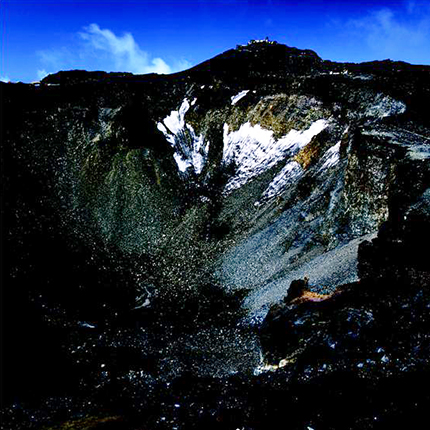
At the summit, there are groups of ruins to tell the value of Fujisan (Mt. Fuji) as the subject of faith, including the Kusushi-jinja Shrine (Yakushido) which is the subordinate shrine of Fujisan Hongu Sengen Taisha Shrine, and the wells of "Kimmeisui" and "Gimmeisui", where the snowmelt at the summit leaks out of the ground. The area has become an important place for Fuji faith as there are other assets such as a looped pilgrimage route, which is called "Hachiyo (a bowl)". It was so named because people thought the shape of peaks surrounding the crater was representing the world depicted in a mandala of Buddhism.
1-2 Omiya-Murayama Ascending Route (current Fujinomiya Ascending Route)
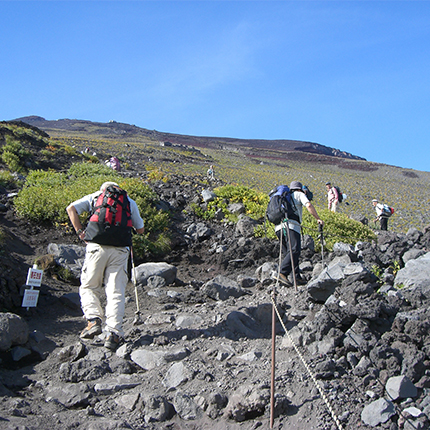
The ascending route starting from Murayama-guchi Fujisan Hongu Sengen Taisha Shrine at the southwestern foot of Mt. Fuji, through the Murayama Sengen Shrine, to reach to the south side of the summit. As the monk of Heian period named Matsudai Shonin who founded Murayama Shugen religion used it as his training place, it became prosperous with monks practicing on the route from the Kamakura period onward. In the Edo period, the Douja monk known as "Murayama Sanbo" came to manage the Fujisan Koboji Temple (current Murayama Sengen-jinja Shrine) and the ascending route as well. Having been used also by general public as their mountain pilgrimage route since old times, it has been depicted in many pictorial diagrams, such as "Color painting on silk of Fuji Mandala”.
1-3 Suyama Ascending Route (current Gotemba Ascending Route)
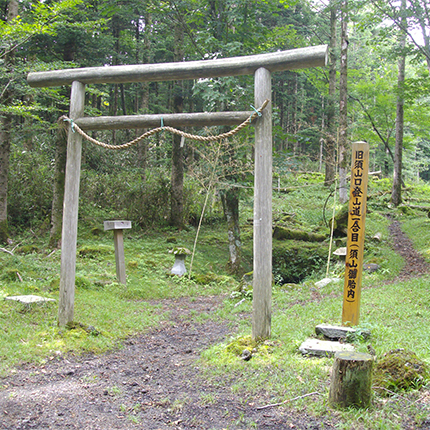
The ascending route starting from the Suyama Sengen-jinja Shrine at the southeastern foot of Mt. Fuji, to reach to the southeast side of the summit, also known as "South Entrance" route. There is the wind cave named "Suyama Otainai" around the 1st station. The mountaineering ascetics’ training field is along the route, and the spring called "Gimmeisui", of which water has been regarded as miraculous since old times, is at the summit. In 1707 in the mid-Edo period, the Great Hoei eruption occurred nearby, the rout was devastated. Later in 1780, the entire route was restored. This is the ascending route of which course had changed or had been altered most often of all routes until today.
1-4 Subashiri Ascending Route
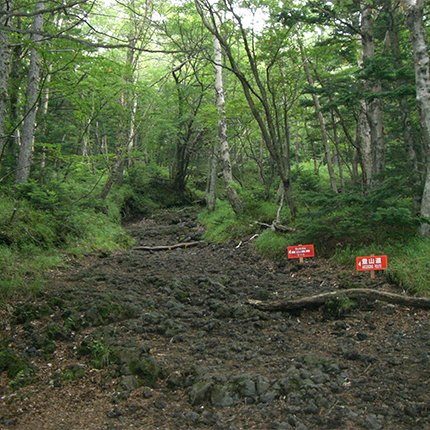
The ascending route starting from Higashi-guchi Hongu Fuji Sengen-jinja Shrine at the eastern foot of Mt. Fuji to reach the east side of the summit after merging with Yoshida Ascending Route at Subashiri-guchi 8th station. Also known as "East Entrance” route. At the 7th station, Kakebotoke (hanging round-copper tablet with Buddha’s image) having an inscription of 1384 (Muromachi period) was excavated. As with Suyama, although it was devastated in the Great Hoei eruption, it was restored in the following year with the support by the Edo Shogunate. Its height of prosperity was marked in the late Edo period. In 1800, an anniversary-related auspicious year of Fuji faith, as many as 23,700 pilgrims visited the area.
1-5 Yoshida Ascending Route
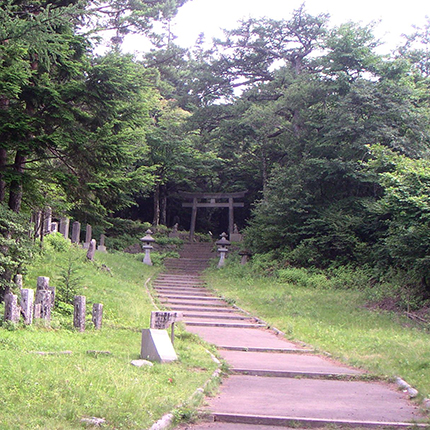
The ascending route starting from Kitaguchi Hongu Fuji Sengen-jinja Shrine on the northern foot of Mt. Fuji to reach to the east side of the summit. Also known as "North Entrance" route. A path was opened in Muromachi period. Later in 1733 in mid-Edo period, a founder of Fuji-ko confraternity restoration named “Jikigyo Miroku” started practicing Nyujo (attainment of Buddhahood during life), the ultimate ascetic practice, on the present 8th station to relieve all people and things. On that occasion, the “Yoshida (North Entrance)” route was established as a main ascending route, which was used later by many Fuji-ko worshippers. Including Umagaeshi, Kyogatake, and Eboshiiwa, various historical sites still remain throughout the route from the 1st station to the summit.
1-6 Kitaguchi Hongu Fuji Sengen-jinja Shrine
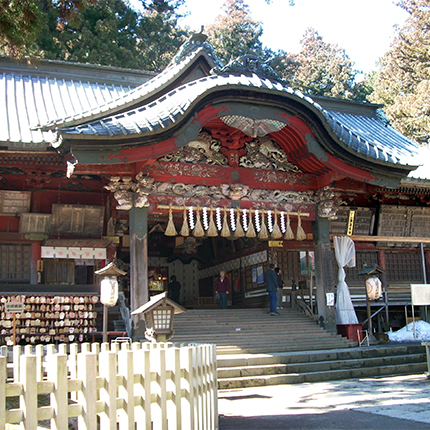
As you go under the golden Torii gate and pass through the Oshi quarter in Kamiyoshida, you will reach to “Sengen-san”, which is very familiar to the local people still today. It is said that the origin of “Sengen-san” derives from the episode that "Yamato Takerunomikoto" built a small shrine at this place on his way of the eastern expedition. According to the legend, he looked up and worshipped Fujisan from here and said “this God Mountain is good to be climbed from the northern side”. The “Togu Honden”, the oldest of the buildings in the precinct, was originally constructed in 1233 (Kamakura period) by Hojo Yoshitoki, and reconstructed by Takeda Shingen in 1561 (Sengoku period). There is also a 1,000 years old sacred cedar tree named “Cedar of Fuji Taro” as well as the “Ascending Gate”, which is the starting point of Yoshida Ascending Route.
1-7 Lake Saiko
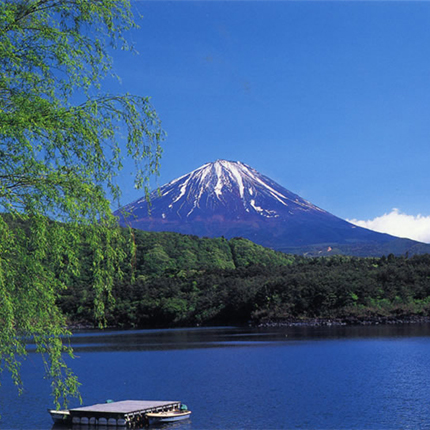
The Lake Saiko - surrounded by the mountains as well as Aokigaharajukai Woodland, and filled with light blue water. It was once called “Sea of the West”. The rain fallen on Fujisan became the ground water, which gushing out of the lake bottom to be the lake water.
The indigenous kunimasu trout of Lake Tazawa, Akita prefecture, had been believed to be extinct around 1940. However, it was confirmed to be living by the survey conducted here in 2010. And back in 1981, a dugout regarded to have been used for religious festivals around the late Kamakura period was discovered from the lake bottom. This is one of the pilgrimage destinations of the "Uchihakkai Tour" for Fuji-ko believers to make water training in each of the eight lakes in the mountain foot.
1-8 Lake Shojiko
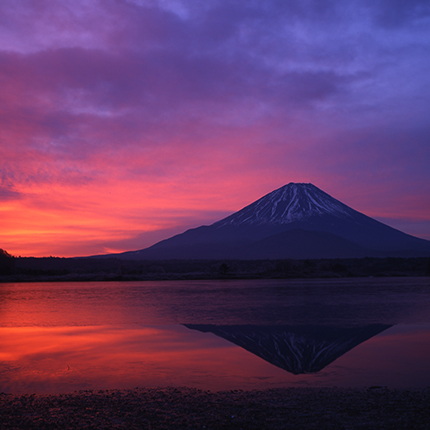
Lake Shojiko with green colored lake water is the smallest among the Fuji Five Lakes and surrounded by a quiet forest. In Meiji Period, Harry Stewart Whitworths (a British with Japanese name Yoshiharu Hoshino) introduced the lake to overseas by calling it the world’s most good-looking "Japanese Shoji", which made it be known by many foreigners. Fujisan seen over the lake surface is a popular photogenic subject known as “Fuji holding a child", as it just looks like holding the Ohmuroyama in its arm. This is one of the pilgrimage destinations of the "Uchihakkai Tour" for Fuji-ko believers to make water training in each of the eight lakes in the mountain foot.
1-9 Lake Motosuko
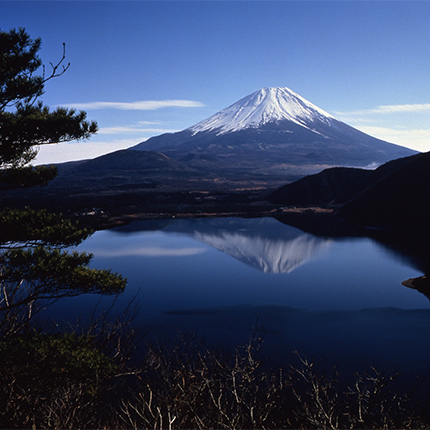
The view over the lake surface is well known with a photo of “Lake Side in Spring” featuring sakasa-fuji (Mt. Fuji as reflected in a lake) by Koyo Okada who took photos of Fujisan throughout his life. This is a spot of scenic beauty also depicted in the design of five thousand-yen and thousand-yen bills.This is one of the pilgrimage destinations of the "Uchihakkai Tour" for Fuji-ko believers to make water training in each of the eight lakes in the mountain foot. The earthen vessels made mostly in the tumulus period were unearthed from the lake bottom, which tells the existence of an ancient village here.
2 Fujisan Hongu Sengen Taisha Shrine
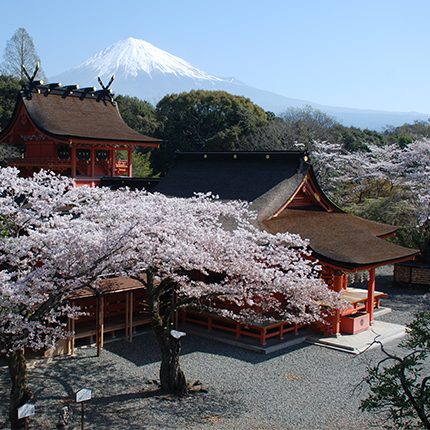
With its precinct being in places at 8th station or above, it consists of two shrines: the “Hongu” in Fujinomiya at the southern foot, and the “Okumiya” at the summit, Renowned as the No.1 shrine of Suruga region, this is the grand head shrine of all Sengen-jinja shrines nationwide. The “Hongu” was established in 806 in Heian period by Sakanoueno Tamuramaro. The foundation of “Hongu” is said to have been the reason for the former “Sangu”, which used to be at the current Sangu Sengen-jinja Shrine, to be relocated. The present main shrine hall was built by Tokugawa Ieyasu in 1604 in Edo period. This is the starting point of Omiya-Murayama Ascending Route.
3 Sangu Sengen-jinja Shrine
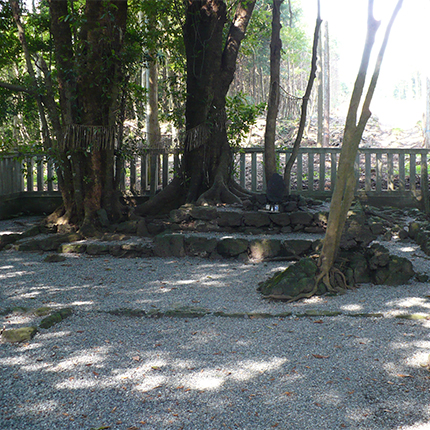
In the history, the place where Ogami of Fujisan belief was deified first is the current Sangu Sengen-jinja Shrine. Later it changed to be “Sangu” as the Ogami was transferred to Fujisan Hongu Sengen Taisha Shrine. Because of being a shrine ahead of “Hongu”, this is regarded as the oldest in all of over 1,300 Asama and Sengen shrines nationwide. There is no main shrine hall in the precinct. And space of ritual remains with sacred trees and worshipping place only exist. The worshipping place is located at the far end of the lava flow. Arranged here are the rows of stones facing to the direction of Fujisan. It is also surrounded by the stone mounds built with lava.
4 Murayama Sengen-jinja Shrine
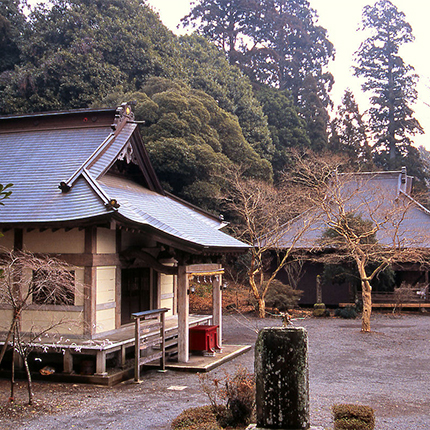
It has been told that Murayama Sengen-jinja Shrine was established originally at an important position along the Murayama Ascending Route halfway up the Fujisan, However, it was relocated later to this present location in 701 in the late Asuka period. And after that, Matsudai Shonin, a monk who opened Fujisan as a sacred mountain of Shugen religion in Heian period, kept a hall here, which started the later development of Koboji Temple. There were many lodgings in the area, which prospered as the place of syncretization of Shinto with Buddhism and as the center for the Shugen religion worshippers. But in Meiji period, Fujisan Koboji Temple was abolished, and the present Koboji Dainichido, and the main hall of Murayama Sengen-jinja Shrine still remain at this place..
5 Suyama Sengen-jinja Shrine
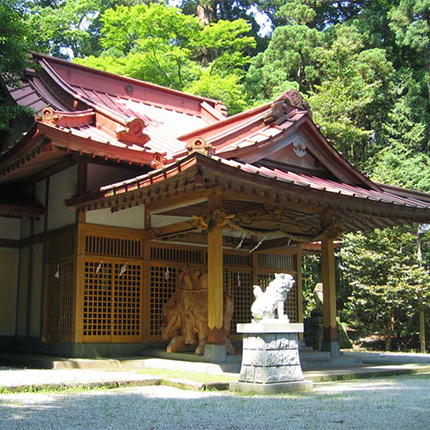
The shrine which is the starting point of Suyama Ascending Route on the southeastern foot of Fujisan. It is inferred from the relics that the shrine existed in 1524 in Muromachi period at the latest. After recovering from the Great Hoei eruption in 1707 in Edo period, it assumed an important role in the mountain pilgrimage by many people starting from southeastern foot of Fujisan. However, since Gotemba Ascending Route opened in 1883 in Meiji period, the number of users of Suyama Ascending Route has decreased gradually. With the 400 to 500 years old giant trees of cryptomeria standing side by side, the place is shrouded with sacred atmosphere.
6 Fuji Sengen-jinja Shrine (Subashiri Sengen-jinja Shrine)
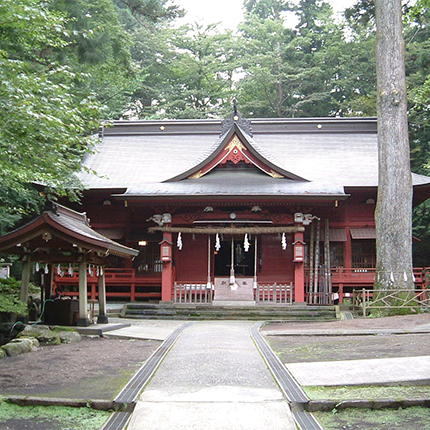
In 802 in Heian Period, a ritual site was established to calm the eruption of the eastern foot of Fujisan, and a fire-extinguishing ritual actually held here. With that as a start, this shrine was established at this place in 807. Together with the village’s posting station, it prospered as the Hongu of Subashiri Ascending Route in Edo period. The main shrine, however, was destroyed by the Great Hoei eruption in 1707 and was reconstructed in 1718. The cultural assets such as shrine halls and the shrine gate being scattered in the same layout with the original architecture, and the guardian shrine grove where the waterway running along the approach to the shrine turning into a waterfall right at the entrance to the precinct, all of which are familiar to the local people still today.
7 Kawaguchi Asama-jinja Shrine
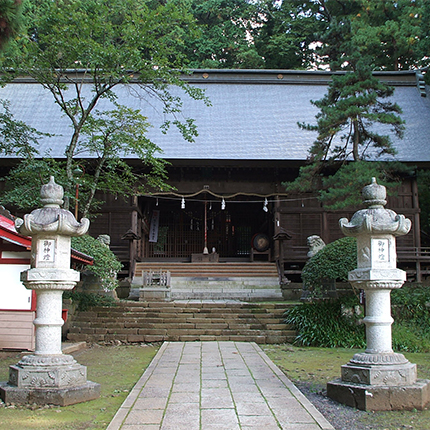
This Shrine started as the Asama God was enshrined in 865 in Heian period, the year following the Great Jogan eruption. The small shrine made of "beautiful (HIIRA) stone" in front of the main hall of the Shrine is regarded as the oldest relics to have enshrined Asama God. Also over 1,200 years old sacred trees called "Seven cedars" are lined up in the precincts. In the fire-extinguishing ritual held in July every year, “Kawaguchi Chigomai” danced by a group of little girls in accordance with ancient ritual is dedicated. In the mountain at the back of the shrine, there is Hahanoshirataki Waterfall where pilgrims performed purification ceremony, and Hahanoshirataki Shrine also is enshrined, telling the history of Fujisan belief still today.
8 Fuji Omuro Sengen-jinja Shrine
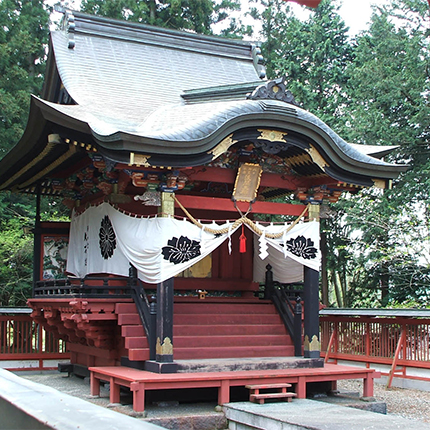
As both “Motomiya” with Fujisan in the background and "Satomiya" with Lake Kawaguchiko in the background are built within the same precinct, you can look at Fujisan in the direction of the line connecting “Otorii” and "Satomiya". At the time of foundation, “Motomiya” was enshrined on the 2nd station of Fujisan by Fujiwara Yoshitada in 699 at the end of Asuka period. In 1974 in Showa period, because it seemed to be collapsing due to eruptions and other severities of nature, it was moved to the present location for the purpose of preservation. It became the shrine for the three generations of Takeda Family, a wartime daimyo, and Takeda Shingen's handwritten prayer for safe childbirth and his autograph of safe delivery prayers, and his seated figure carved by him-self were dedicated.
“Oshi” Lodging House (9 Former House of the Togawa Family, 10 House of the Osano Family)
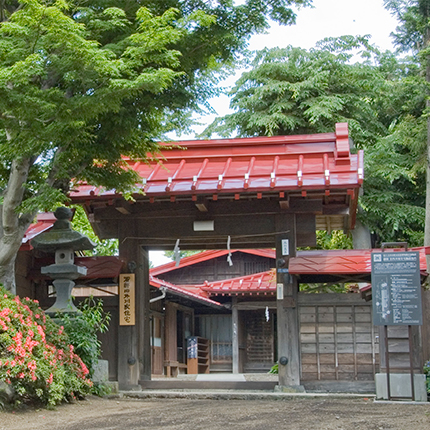
Oshi were the people who took care of everything including meals and lodgings for Fuji-ko believers’mountain pilgrimage on Fujisan, and also worked as Shinto priests in charge of propagation and prayer of Fujisan belief. Oshi Lodging House is Oshi’s house and a lodging facility. At its peak, as many as 86 Oshi Lodging Houses were located along the town street of Fujiyoshida, it is said. The main building of the former house of the Togawa family built in 1768 in mid-Edo period is a very precious oldest building in a good state of preservation. The house of the Osano family reconstructed in 1861 in late-Edo period shows the layout of a building in the golden age of Fuji-ko.
11 Lake Yamanakako
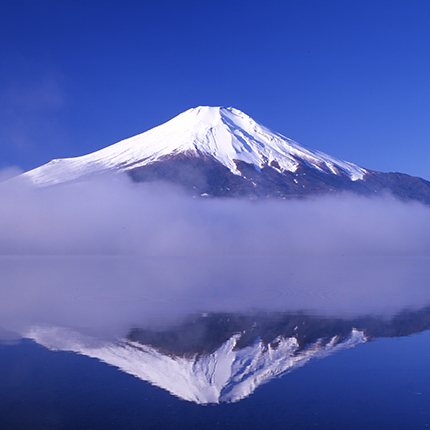
The largest of all Fuji Five Lakes with lake surface elevation also is the highest, recording 980.5m, which is the 3rd highest in Japan. On the other hand, the water depth is shallowest and freezes over completely in a severe cold season. The Katsuragawa River (called Sagamigawa River in mid or lower reaches in Kanagawa prefecture) of which source is Lake Yamanakako pours into Pacific Ocean via Lake Sagamiko and Lake Tsukuiko. “Fujimarimo” spherical moss grows in the Lake, being the species’ southern limit of distribution. On summer nights, you’ll be able to see over the lake surface the line of lights held by climbers, aiming for reaching to the summit. This is one of the pilgrimage destinations of the "Uchihakkai Tour" for Fuji-ko believers to make water training in each of the eight lakes in the mountain foot.
12 Lake Kawaguchiko
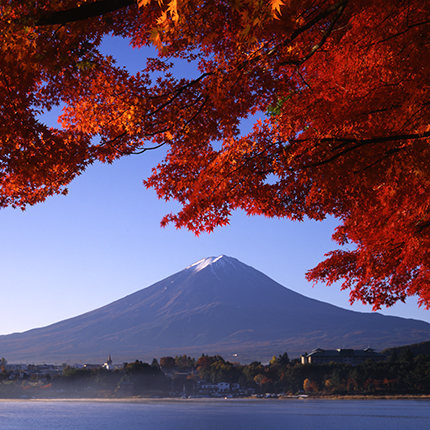
Having the longest shoreline and the lowest altitude of surface among Fuji Five Lakes, the Lake Kawaguchiko has no natural outlets (rivers starting from it). In the center of the lake surface, there is a small island named "Unoshima", enshrining Benzaiten (the goddess Saraswati ), where earthenware from Jomon to Yayoi period have been excavated. With various stone monuments of haiku poem being gathered, the "Ubuyagasaki Small Peninsula" on the lakeside shows one of Japan’s original sceneries featuring Fujisan, cherry blossom and lake. This is one of the pilgrimage destinations of the "Uchihakkai Tour" for Fuji-ko believers to make water training in each of the eight lakes in the mountain foot.
Oshino Hakkai (13 Deguchi-Ike pond, 14 Okama-ike pond, 15 Sokonuke-ike pond, 16 Choshi-ike pond, 17 Waku-ike pond, 18 Nigori-ike pond, 19 Kagami-ike pond, 20 Ayame-ike pond)
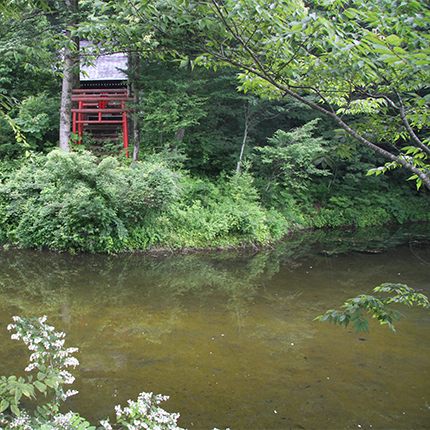
Oshino Hakkai consists of eight spring water ponds of which water originated from the subsoil water of Fujisan. At these lakes known as “Fujisan-nemoto-hakko”, Fuji-ko believers practiced Mizugori (cold-water ablution) during their “Uchihakkai Tour”, which was for climbing and worshipping Fujisan. From this water, villagers living in the foot of Fujisan have been receiving the blessings to their life and livelihood. The natural waterscape here with atmosphere attracts many people.
21 Funatsu lava tree mold
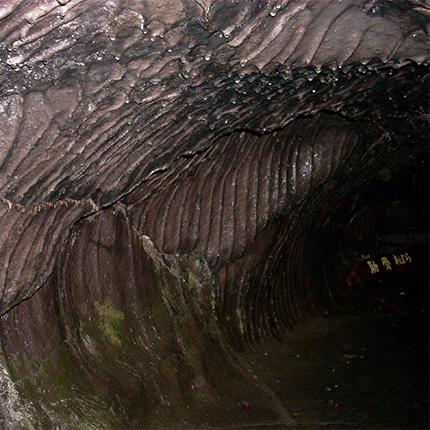
Funatsu lava tree mold is a cave formed as a giant tree was fallen and burned due to lava flow. To enter into the cave, you can only go through the Funatsu Lava Shrine located within the Lake Kawaguchiko Field Center. The wall of cave is like a rib, and the ceiling is shaped like stalactites and covered with strange wrinkle patterns, just looking like an organ inside a mother’s body. Referred to as “Otainai (womb)”, this place is a sacred ground to experience rebirth. As a combination of several tree molds as long as approx. 20 m, the cave length is approx. 70 m in total. This is a sacred place where Fuji-ko believers purify their body before climbing to the summit and also a place for people to pray for safe delivery.
22 Yoshida lava tree molds
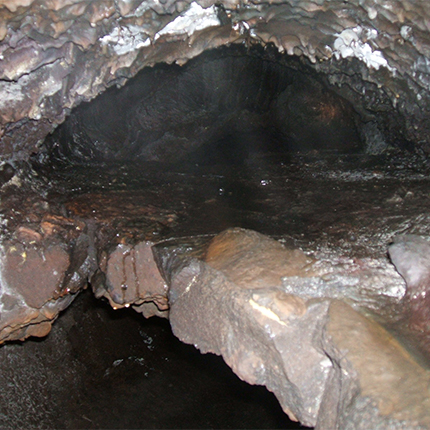
The cave here was formed at the eastern end of Kenmarubi lava flow generated due to the eruption in 937 in Heian period, and was discovered by Fuji-ko believers in 1892 in Meiji period. It consists of one horizontal hole-type of tree mold, 3 well-crib-shaped tree molds, and one small cylindrical horizontal hole-type of tree mold. In the horizontal hole-typed one, grain patterns still remain clearly, and lava stalagmite also can be seen in its bottom surface. These have been preserved by Fuji-ko believers and Oshi who also visited Fujisan frequently. Although the inside of the cave is not open to public, “Yoshida Tainai Festival” is held at this place once a year.
23 Hitoana Fuji-ko Iseki
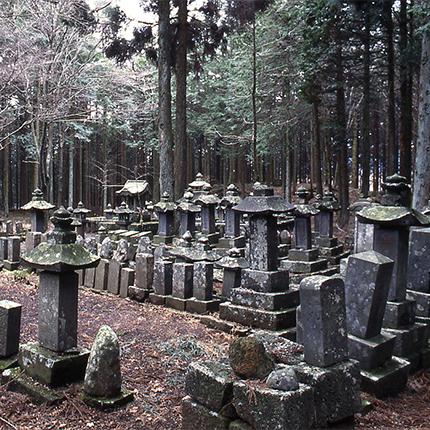
In Hitoana Sengen-jinja Shrine (or “Kokyu-ji Temple Dainichido” before Meiji period)located at the western foot of Fujisan, there is a lava cave called “Hitoana”. It is said that Hasegawa Kakugyo, regarded as the founder of Fuji-ko, practiced religious austerities to keep standing up for 1,000 days in this cave, which is approx. 83 m long in total. Having received revelation from Asama-no-Okami (Great Goddess of Asama), Kakugyo entered Nirvana here soon after that. Over 230 stone monuments raised by Fuji-ko believers still remain surrounding the cave. A story of a samurai warrior who had a spiritual experience while exploring inside this cave is recorded in “Azuma Kagami”, a history book written in Kamakura period.
24 Shiraito no Taki waterfalls
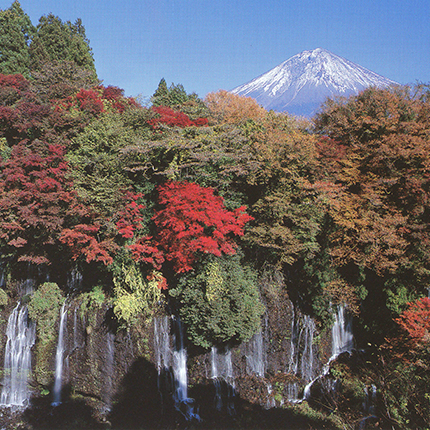
A waterfall of which source is the subsoil water of Fujisan. The river water and the spring water gushing out of lava fault get together to run down from approx. 200m wide and 20m high cliff, as if like cascading numerous white silk threads. Dropping by this fall on his way back from a hunting session at Mt. Fuji, Minamoto no Yoritomo wrote a waka poem: ”How beautiful the princess up there could be? Cascading such a beautiful threads – the Shiraito no taki.” Above the fall, there is a spring which is said to be the place where Yoritomo fixed his stray hair, which became one of Fuji-ko believers’ sacred places. Also there is the dynamic "Otodome no Taki Waterfall" in the same area.
25 Mihonomatsubara pine tree grove
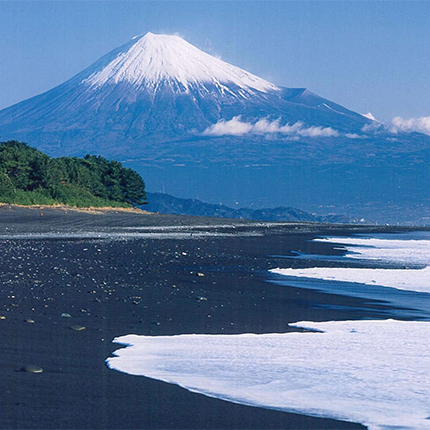
A scenic area on the beach, extending over the east coast of Miho Peninsula which projects into Suruga Bay. With blue ocean and pine forest and foamy waves beating the shore in the front, the distant view of Fujisan is just like a painting. This is a place well-known for being the stage of Noh play “Hagoromo” (Robe of Heaven). The story of this “legend of the Robe of Heaven” goes that once upon a time, when a heavenly maiden landed on the ground and was bathing. Then came a fisherman to pick up her robe hanged on a tree branch. And she showed him beautiful dance in exchange for the robe. It is also described in a poem in the "Manyoshu" in old times and also became the theme of many other literary works and paintings such as Ukiyoe in Edo period.
Copyright © 2016 Fujisan World Heritage Center all rights reserved.